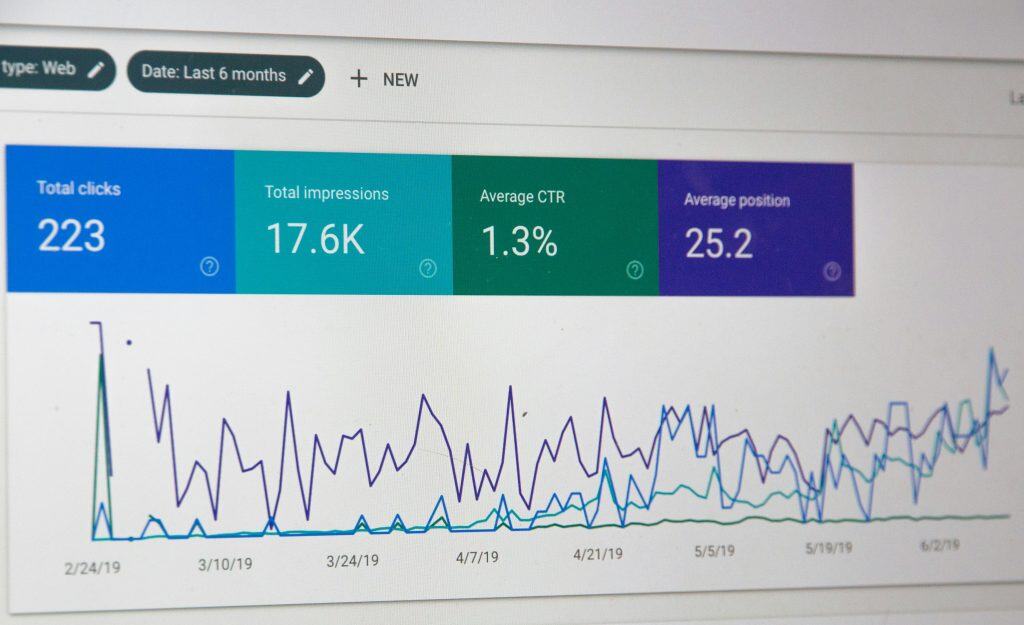Search has shifted from set-and-forget checklists to living systems that respond in real time. Static pages and quarterly audits are not enough when algorithms and user intent move daily.
Agentic SEO is a way to run search programs that sense, plan, act, and learn continuously. It blends human strategy with AI agents that follow clear goals, use tools, and close the loop with real data.


Contents
TL;DR
- Agentic SEO uses small, focused AI agents plus human oversight to improve search outcomes continuously.
- It is not hands-off automation; you set goals, guardrails, and review loops that keep quality high.
- Start where feedback is fast: internal linking, on-page enhancements, and structured data at scale.
- Measure what changes for users and the business, not just rankings, and retire agents that do not help.
What Agentic SEO Means Today
Agentic SEO treats SEO like an adaptive system, not a one-time project. An agent is a software worker that pursues a goal, uses tools like analytics or crawlers, and updates its next move based on results. Unlike simple scripts, agents plan steps, act, then learn from feedback you define.
This approach complements core search fundamentals. You still need crawlable pages, helpful content, clean architecture, and trustworthy signals. Agentic workflows just help you do those things faster, more consistently, and with tighter feedback cycles.
How Agentic SEO Works
Signals And Sources
An agentic setup draws from a few steady inputs:
- User behavior: queries, click paths, on-page engagement, support tickets, and sales chats
- Search data: impressions, queries, structured data coverage, and index status
- Site telemetry: crawl stats, Core Web Vitals, and error logs
- Content inventory: topics, freshness, backlinks, and internal link graph
Agents watch these inputs, propose changes, and test them against clear success metrics like improved click‑through, deeper session depth, or stronger conversion.
Loops And Guardrails
A loop is the path from observation to action to measured outcome. Guardrails are rules that keep actions safe. For SEO, guardrails include style guidelines, schema types allowed, no-go URL patterns, canonical rules, and approval thresholds. Aim for short loops that ship small changes daily or weekly. Keep human review in the loop for anything public facing, and log every change for easy rollback.
Roles On The Team
- Strategist sets goals, guardrails, and priorities.
- Engineer connects data sources, tools, and deployment.
- Editor reviews agent outputs and protects brand voice.
- Analyst tracks outcomes and tunes the loop.


Agentic SEO vs Traditional SEO
| Area | Traditional SEO | Agentic SEO |
| Planning | Annual roadmap with periodic updates | Continuous backlog that reprioritizes based on live data |
| Execution | Manual sprints and batch changes | Small agents ship frequent, scoped improvements |
| Feedback | Monthly reports and quarterly audits | Always-on metrics and automated alerts |
| Tooling | CMS, keyword tools, one crawler | Orchestrator, APIs, logs, and task-specific agents |
| Risk | Slow to react; low change risk | Faster iteration; needs guardrails to avoid mistakes |
| Success | Rankings and traffic | User outcomes, conversions, and durable search visibility |
What To Optimize For In 2025 Search
Keep your foundation tight. Search platforms still rely on technical access, content quality, and policy compliance. Make sure your pages can be crawled and indexed, follow spam policies, and focus on people-first content. Structured data improves how pages are understood and may unlock richer presentation. Core Web Vitals matter for user experience; pay attention to Interaction to Next Paint (INP) along with LCP and CLS.
Tie agent activity to these pillars: – Technical access: robots rules, canonical tags, sitemaps, and clean internal links.
- Useful content: clear answers, credible sources, and authors with real-world experience.
- Experience: fast, stable pages and readable layouts.
- Structured understanding: accurate schema markup with coverage monitoring.
- Reporting: query-level trends, index coverage, vitals, and change logs.
Agentic Tactics That Actually Help
- Intent gap detection: scan queries that impressions show you win but CTR is weak, then propose title/meta tweaks and intent-focused paragraph updates.
- Internal link sculpting: map orphan pages and low-depth sections, then insert a few relevant links from strong hubs with natural anchor text.
- Schema coverage: generate or validate Product, Article, FAQ, and Organization markup, then alert when coverage drops.
- Snippet experiments: A/B test title formats at scale within brand rules and revert losing variants automatically.
- Freshness routing: identify pages tied to dates, versions, or releases and schedule review prompts before they drift.
- Programmatic editorial briefs: build briefs from SERP patterns and your data; humans write or edit the final copy.
Pitfalls To Avoid
- Over-automation that publishes unreviewed content. Keep human edit rights on anything visible.
- Thin or duplicative pages. Consolidate and redirect instead of spawning near-duplicates.
- Ignoring policies. Automated links, hidden text, and scraped content can trigger spam issues.
- Crawl bloat. Do not let agents create endless filters or parameters that waste crawl budget.
- Hallucinated facts. Require citations for claims and enforce source lists in briefs.
Examples
Here are some examples of what agentic SEO might look like for businesses:
Example: A Catalog Site Lifts CTR On Stale Categories
A mid-sized retailer saw flat traffic on 200 category pages. An agent scanned Search Console queries, flagged pages where impressions were high but CTR trailed peers, and drafted title/meta candidates using live query phrasing.
Editors approved changes inside a queue with brand checks. Over eight weeks, median CTR for the cohort rose meaningfully, and revenue from those pages ticked up in parallel. The team retired losing variants, kept winners, and scheduled a follow-up pass for long-tail terms.


Example: A SaaS Knowledge Base Reduces Support Volume
A B2B SaaS company routed support tickets and on-site search logs into an agent that mapped unanswered questions to existing docs. The agent suggested adding FAQ blocks with structured data, internal links to setup guides, and short clarifying paragraphs.
Editors reviewed and published weekly batches. Organic sessions to help docs grew, average time-to-answer dropped, and support tickets on those topics declined, saving agent and human hours.
Actionable Steps / Checklist
- Define one measurable goal, like lift CTR on top 100 templates by 1 point.
- Choose one surface to start, such as titles and meta descriptions or internal links.
- Write guardrails: tone, maximum change size, banned patterns, and required checks.
- Wire your data: analytics, Search Console, crawler, and Core Web Vitals.
- Pick or build a small orchestrator that logs prompts, diffs, approvals, and rollbacks.
- Start with read-only agents that create briefs, link suggestions, or schema diffs.
- Pilot with 20 to 50 URLs. Ship weekly, not daily, until the loop is stable.
- Review outputs in batches. Approve, edit, or reject with reasons so the system learns.
- Track outcomes tied to business impact: CTR, conversion rate, and assisted revenue.
- Add one new capability per month, not ten at once.
- Prune aggressively. Turn off agents that do not move a metric you care about.
- Document everything so teammates can audit changes and reproduce wins.
Glossary
- Agentic SEO: An approach that uses goal-driven software agents plus human oversight to plan, ship, and learn from SEO changes.
- Guardrails: Rules that constrain agent actions, such as style, schema types, URL scopes, and approval thresholds.
- Core Web Vitals: Google-backed user experience metrics that include LCP, CLS, and INP.
- INP: Interaction to Next Paint, a responsiveness metric that replaced FID in the Core Web Vitals set.
- Structured Data: Machine-readable markup that helps search engines understand content, often via schema.org types.
- Canonical URL: A signal that indicates the preferred version of duplicate or similar pages.
- Crawl Budget: The amount of crawling a site can expect over a period; affected by site size, health, and demand.
- E-E-A-T: A shorthand for experience, expertise, authoritativeness, and trust in content and its sources.
FAQ
How is agentic SEO different from simple automation?
Automation runs fixed scripts; agentic workflows observe results and adjust plans. You define goals and guardrails so agents can propose improvements that humans approve.
Is ai-generated content safe for SEO?
Search guidance focuses on helpful, people-first content and policy compliance, not the tool you used. Keep human review, cite sources, and avoid spammy tactics.
Where should I start if I have limited resources?
Pick one high-leverage surface with quick feedback, like titles or internal links on your top 50 pages. Build the loop and logging before adding more.
Do core web vitals still matter?
Yes. They reflect user experience and are worth improving even beyond search considerations. Watch INP alongside LCP and CLS.
How do I measure success?
Track the metric you promised to move, such as CTR or conversions for a targeted set of URLs, and tie changes to specific agent releases with a simple change log.
Final Thoughts
Agentic SEO is not magic. It is disciplined prioritization, small safe bets, and steady learning. Start narrow, ship often, measure what matters, and let your program get smarter each week.

